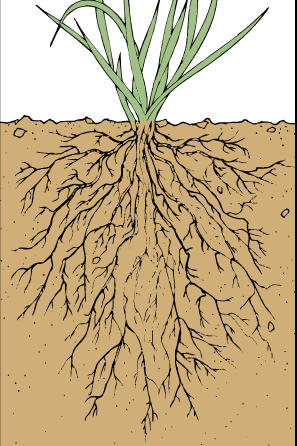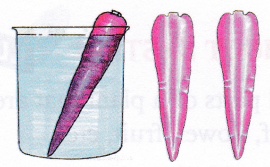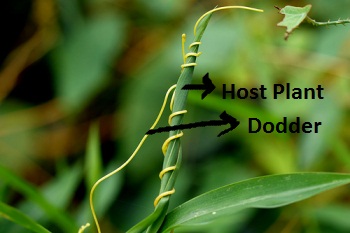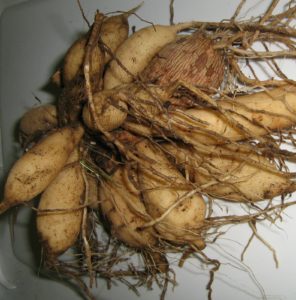What are the Main Functions of the Root System in a Plant
Root systems
There are two main types of root systems: tap root and fibrous root system.
- Tap Root System
In the tap root system, a single root (called the primary root) comes out from the seed after germination. Tap roots are also called true roots.
Later, smaller roots called lateral roots branch out from this primary root. Mango, neem, pine, sheesham, pea, carrot, radish, turnip, and beetroot are examples of plants in which tap roots are found.
Tap root system - Fibrous Root System
Fibrous roots, which grow from the base of the stem have a bushy appearance. These roots are thin and almost equal in size. Grass, maize, wheat, onion, sugarcane, and rice are examples of plants with fibrous roots.
Fibrous Root System
Functions of Roots
Some functions of roots are given below:
- Anchoring the plant Roots help to anchor the plant firmly into the ground.
- Absorption of water and nutrients from the soil They help plants to absorb water and nutrients from the soil, which are essential for their survival.
- Preventing soil erosion They help to bind the soil particles together, thereby preventing them from being carried away by water or wind.
- Sometimes roots are modified to perform various other functions like reproduction, nutrition, etc.
Activity
Aim: To observe anchorage by roots Method: Try pulling out a handful of grass from the ground.
Observation: It would not be easy to pull out the grass and something would prevent the grass from being pulled out. Carefully dig out some grass and see what prevented the grass from being pulled out.
Conclusion: Roots bind soil particles and hold the plant firmly in one place to the ground.
Activity
Aim: To observe absorption by roots
Materials needed: A carrot, a glass of water, and blue colouring agent
Method:
1. Put a carrot in a glass of water containing some blue colouring agent.
2. Leave the carrot in water for some days.

3. Then cut it into half (lengthwise) and look inside.
Observation: Blue colouring can be seen from the bottom to the top of the carrot.
Conclusion: Water is absorbed by the tip of the carrot and travelled up inside it along with the blue colouring agent.
Root Modifications
Roots of some plants are modified to perform additional functions. Let us study some of these modifications and their functions.
- For storage of food, the roots of some plants, like radish, carrot, turnip, sweet potato, and beetroot, become fleshy.

- For climbing, some plants have climbing roots that help the plant to climb up a support like a wall, rock, or tree, e.g., money plant, black pepper, and betel.

- For nutrition, plants like dodder have specialized roots called parasitic roots arising from their stem, which help them to absorb water and nutrients from the host.

- For multiplication, roots of plants like dahlia and asparagus can develop into new plants.

- For extra support, root of plants like bamboo, sugarcane, and banyan give out extra roots from their branches. These roots grow downwards and give extra support to the stem of the plant. These are called prop roots.
